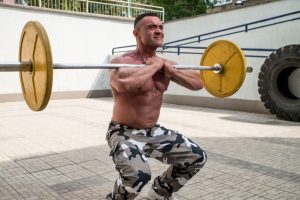Among all the muscle groups of man there are those who are responsible for stabilizing the spine, pelvis and thighs while performing physical strengthening exercises. In general, such muscles play a major role in the stable position of the body at the time of any physical exertion and are a reliable protection against getting any injuries as a result of losing balance.
These muscles are figuratively called the core, that is, a strong base, around which everything else holds. The core category includes: oblique abdominal muscles, transverse m. Abdomen, straight belly, small and middle gluteal m., Leading to the m., M. Of the posterior surface of the thigh, subacute m., Beak-brachial m., Etc. In addition , so that the core muscles retain their strength and effectively fulfill their function as a stabilizer, they should be periodically trained by special strengthening exercises, which mainly work for this group. Here are some multifunctional strengthening exercises that develop the strength and strength of the core muscles:
Turns the torso with the neck seated.

Roller rolling.
Strengthening exercise for almost the entire body, which is performed in two versions: the first – more simple, for beginners – rolling out of the position on the knees; the second is a difficult one, for the advanced – rolling out from a standing position on straight legs. To begin with, it is better to perform a simplified version. Starting position: rolling on the roller on the knees, the roller is held with both hands and should be at the level of deltas or faces, for this the trunk should be tilted forward. The first slow movement is made by hands with a roller, then the body. Slowly roll the roller forward and lean after it, controlling it and not letting the roller roll too fast. Everyone chooses the lowest point of the amplitude as they train, they can be almost completely extended arms or not, but in any case it is important not to touch the hips and abdomen of the floor in order to maintain a useful tension in these muscles. For a moment, stay at the lowest point of the amplitude and return to the starting position. This exercise is performed for well-being, not too long and not every day (3-4 times a week). The first time the muscles of the nucleus can be very painful after rolling out, but gradually they will strengthen and get excellent strength.
Mill with weights.
When the “mill” is carried out, a targeted training of all abdominal muscles is carried out with a bias on the oblique muscles, and only in this unique exercise the oblique Mill with gyrismys are used so intensively and powerfully that their development and improved relief appearance will be noticeable in the shortest possible time. The main thing here is to consciously keep the movement control all the time, doing the repetition slowly and not letting the impulse or gravity bring down the rhythm, raising or lowering the torso with jerks, it is traumatic for the back strengthening exercises. Quality load should be felt not only in the press, but also in the buttocks, as well as in the hamstrings. Naturally, the weight of the dumbbell should not be too heavy, so as not to be distracted by keeping the weight “with all its might,” but to use mental energy to control the working muscles, fully feeling the load in them.
Zercher squats.

Slopes in the side with dumbbells (weight) standing.
Exercise is mainly for the oblique muscles of the abdomen. Starting position: standing, feet on the width of the shoulders, dumbbell (dumbbell) is held only in one hand, so that there is no opposite counterweight. The slopes are made in the direction of that hand, in the Naklony in the side with dumbbells (weight), which is held by a dumbbell. The weight of the dumbbell is moderate, to perform a slow 15 repetitions strengthening exercises. The rule is this: with a larger weight, the oblique muscles, like any other muscle, can increase excessively, while the waist becomes wider, but if the weight is moderate and slow repetitions are performed, the muscles, along with the strengthening, become more prominent without unnecessary increase. Tilts need to be done not too low, to a comfortable feeling and stretching of working oblique muscles. At the upper point of the amplitude, you can bend slightly toward the slanting workers, this will add to them a contraction that will effectively affect when they are stretched in the slope phase. 15 slow repetitions on each side.

